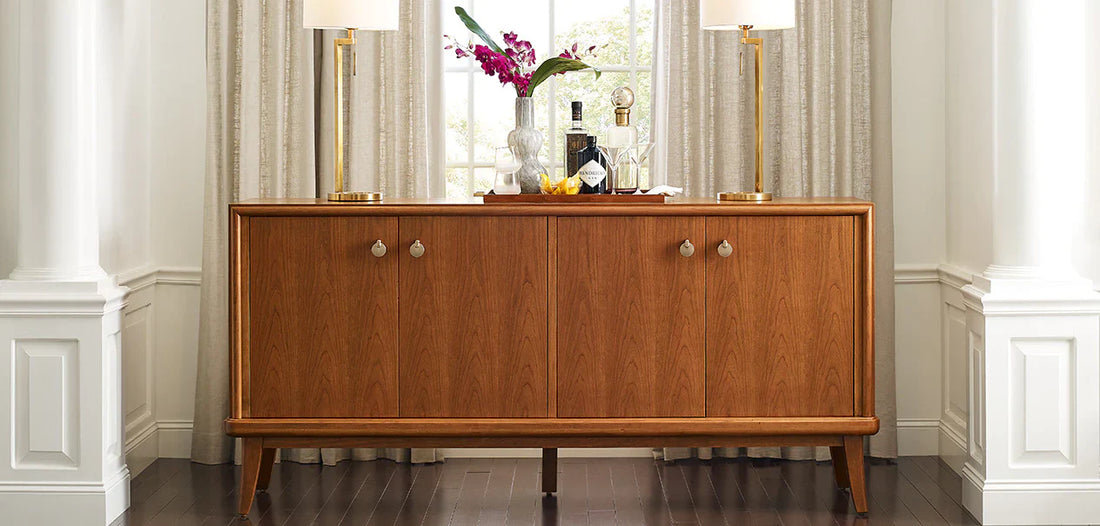
Understanding Decorative Veneers
Darcy SmithShare
 Print
Print
[originally posted May 2023]
Decades of mass-produced furniture have led many people to associate veneers with cheapness and poor quality, but the truth is that they’re an instrumental feature of the finest luxury furniture. Though Stickley is an acclaimed solid wood manufacturer, high-quality veneers allow us to improve durability and add beautiful decorative detail that wouldn’t otherwise be possible.
Veneer basics
Veneers are very thin slices of wood—usually about 0.5 millimeters—applied over a substrate. Consecutive slices, or flitches, from the same piece of wood are nearly identical to each other, and a typical veneer bundle contains 24 of these matching slices. You can then arrange them in a variety of ways to create unique decorative effects with the grain.
In slip-matched veneers, flitches are placed side by side to create a repeated pattern that has a visual balance, as seen in the cherry-veneered doors of our Martine Sideboard.

Book-matched veneers require flipping one flitch to be a mirror image of the first, and the two are paired like the open pages of a book. For continuous-matched veneers, grains are aligned across multiple surfaces to create what appears to be a continuous flow, as on the drawer fronts of the Martine Landscape Dresser.


Craft becomes art
It’s possible to get highly creative in how you cut and match patterns. Tabletops provide a wonderful blank canvas for this type of design. A stunning example is our Martine Sunburst Dining Table with its extraordinary, fluid grain composition achievable only with carefully matched veneers.


Straight grains also lend themselves to visually interesting arrangements, as seen on two of our newest living room occasional groups. For the Lowell occasional tables, rift-sawn oak veneers are arranged in a perpendicular pattern on both large and small tabletops, while on Olympia, four triangles of straight grain meet precisely in the center, with adjacent grains forming a subtle X pattern.



Some of the most interesting, dramatic looks result when exotic woods are sliced from unusual areas of the tree, such as burls and crotches. These small pieces must then be pieced together for use on broad surfaces, and the results can be remarkable. Our Whitehall bedroom group is a beautiful example of crotch mahogany veneers creating a gorgeous feathery grain.


Veneers can also be assembled in complex, artistic forms to produce elaborate marquetry and borders, as seen on our historic John Widdicomb pieces. Even our modern adaptations of Harvey Ellis inlay use the original practice of applying the inlay design to a veneer to prevent delamination of the tiny slices of wood.




Practical matters
It’s important to remember that veneers have important functions beyond the decorative. Solid wood expands and contracts with the relative humidity of its environment, which can compromise the integrity of the joinery in certain types of construction. For example, in wide doors or headboard panels that are captured in a solid wood frame, or shelves contained within an assembly, natural wood movement could damage the surrounding structure. Veneers, which don’t grow or shrink from humidity, are used to prevent this damage and ensure the longevity of the piece.
Additional sources:
Jim Rider II, Director of Engineering








